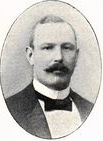Recognize oval shaped illustrations in scanned book pages
How can I automatically detect, crop and save the oval shaped portraits in scanned book pages like this one? http://runeberg.org/spg/17/0183.html I have 20,000 portraits in 6000 pages in this format to begin with. After that I have more books where the shapes might be slightly different. (This is not face recognition. I just want to find the oval shapes.) This question was also asked on the Wikimedia Commons graphics forum, https://commons.wikimedia.org/wiki/Commons%3aGraphics_village_pump#Pulling_illustrations_from_scanned_book_pages
A different example, still with oval portraits, but with a different page layout and no contours, is here, http://runeberg.org/pgsmal/0141.html



